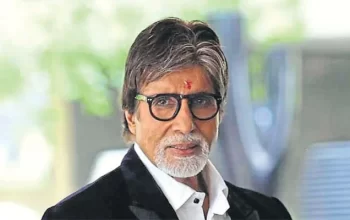In today’s article, I present to you a type of photograph that you may have heard from afar. You have been afraid to approach it, or you have tried it that you have stayed in the intention. It’s about conceptual photography. A type of photography that can turn out to be a very broad field. All the works have a clear common denominator, to express an idea, a concept.
This seems so complex, it is not if you know how to carry it out. That’s why today I tell you in a few simple keys so you can achieve your first conceptual photography. Instead of frustrating you and throwing in the towel, you want to keep trying. If you do not do it, let it be because it does not go with you, you do not like the experience and you are more of another type of discipline. But that is not for not knowing where to start or how to execute. That for that we are on the blog.
What is conceptual photography?

If we say landscape photography, it is easier, but if we talk about artistic photography, for example, or conceptual photography as it is in this case, things get a bit complicated, right? It seems that the limits are less clear and concepts can be confused or mixed. So that you do not get lost, a direct definition to the point: conceptual photography is one that aims, with an image, to transmit a general abstract idea.
Courses within conceptual photography
It could be said that there are two types of currents within this discipline:
The one that tries to make the message as clear and universal as possible. The idea is that everyone who observes the photograph understands the message immediately and without equivocation. In this type of photography, the messages are clear, with simpler images, without distractions.

Another current that sends more subjective messages, with more complex ideas that leave open possible interpretations for the viewer to draw their own conclusions. In this case, the risk is greater. Because the viewer may not understand the message or even see that there is an underlying message. Here, photographs can be more complex, with more symbols or even more ornate elements.
Photograph by Gerome Viavant
To make you a clearer idea, I recommend, without a doubt, that you take a look at the work of Chema Madoz. He is one of the best conceptual photographers in history (and my favorite). His message is clear, direct and his images are prepared but not retouched. You can see here a documentary about his work.
Applications of conceptual photography
Beyond the artistic connotations that conceptual photography can have because of being a photograph, there are some applications or outputs for this discipline.
Advertising photography. Advertising photography is not just about showing a product, an object, but trying to associate that product with a message or idea, from the idea of happiness to the idea of freedom, to give some examples. Advertising has a great ally with conceptual photography and makes the most of it.

Banks of images. If you are looking to expand your career as a photographer, you can consider the possibility of creating conceptual images to sell through image banks. These images are used both for advertising and for illustrating articles (such as this one or any other type), either in digital or printed media.
Social complaint Conceptual photography, although it is very diffuse to the documentary, is also used as a social complaint, to portray the society that surrounds us, as a claim of reflection.
If you identify with any of these reasons, or you are simply curious or you like to experiment and try new photographic styles, I encourage you to continue reading to discover the keys that will help you achieve a conceptual photography.
Retouch Yes or no?
Although first of all, we will talk about a subject that can be controversial. Many of the conceptual images imply a large dose of manipulation or digital retouching. Now, is it necessary? No, it is not. You could say that this is one of the most creative disciplines and that most require the imagination of the photographer.

Because you can transmit the idea without the need for Photoshop or any other program of photo retouching. In fact, I have commented before, the great Chema Madoz, does not achieve his photos with retouching, but with ingenuity. The ingenuity and the imagination can replace with a lot of retouching or photographic manipulation.
Moreover, the more real an image appears, the more simple and direct, the more it will impact and reach the public. Sometimes conceptual photographs are seen where the result is due more to a creation by computer. It can end up screeching to the brain. If you want an efficient message, better get to the point.
It is not necessary to modify an image to transmit a concept
On the other hand, with retouching programs, there is a powerful tool that opens up a whole world of possibilities. It can be used for one’s own benefit and the message that one wants to transmit. This tool is not necessary but it can help.
How to make conceptual photography?

In this case, the way of working is different from how we usually proceed. Normally you grab your camera and go in search of landscapes, emotions, beautiful scenarios, street snapshots, etcetera. You seek to capture the beauty of what surrounds you or immortalize moments, for example.
There is a reality that you photograph, although in the process you modify that reality through the composition, speed or any other photographic technique that you have at your disposal. In conceptual photography, you believe that reality. Nothing is random, it requires planning. It is possible to capture it by chance, it is unusual. Shooting is the last thing.
Steps to follow

Below I detail the seven steps to follow to achieve a photograph of this type:
1. Search idea or concept
The first thing you have to decide is what idea or concept you want to transmit with your photograph. It can be what you can think of, from death to freedom, going through economic crisis or family. Anything goes.
2. Choose the message
With the same concept, very different messages can be expressed. In this second step, you will have to decide which one you want to send to the viewer. It can be a positive or negative message.
3. Define audience
It is not the same as photography is aimed at a young audience that one more mature or mature, is not the same if it is aimed at women or men, your audience may be the workers of a specific company or a specific city. Define the audience and help you fine-tune in the next step.
4. Brainstorming
Once you have the idea and the message, and your auditing defined, you will have to decide how to transmit it. For this, you can brainstorm what you relate to the concept and the message. From adjectives to situations, people, places, etc., always taking into account the people to whom it is addressed. So that, you are related to the symbolism, with the colors, the place, and so on.
5. Display the image
You have the first sketch in your hands, the first ideas on the table. Now try to visualize them in your mind, imagine how your photography can be. You can even imagine different scenes. Stay with the one you like the most, the one that you see clearer or the one you find most comfortable to execute. This will have an effect on a better result and the desire to repeat.
6. Set the stage
It’s time to build your reality, prepare the objects, the lighting, the ideal scenario. Everything you can think of to achieve the image you have visualized.
7. Execution
Well yes, it is a photograph in which the important thing is the message, but … do you think you can forget about a good exhibition? Or a good composition? Absolutely. Your image must be correct at a technical level, with a good focus, well exposed and with a careful composition. Otherwise, the public will not stop to look at it.
To finish I leave you with some conceptual authors so you can continue deepening in this type of photography: I hope this article has been so inspiring that you cannot resist taking paper and pencil to start expressing your ideas. If so, I’m going to ask you for a favor, to share it so that other people can also try a bite of this interesting photographic discipline. Scoops of ideas for everyone!
You may also like http://reviewsgang.com/tips-and-ideas/wedding-trends-for-2018/














